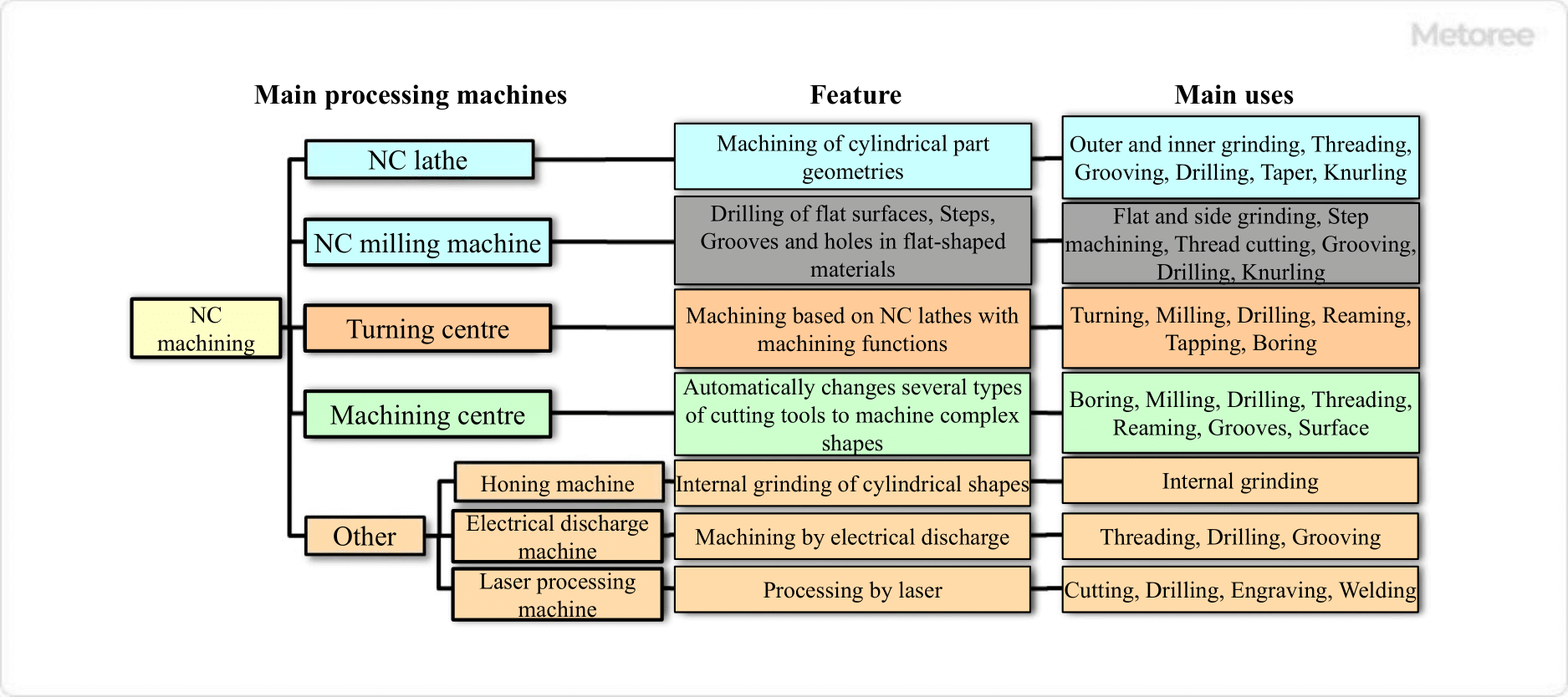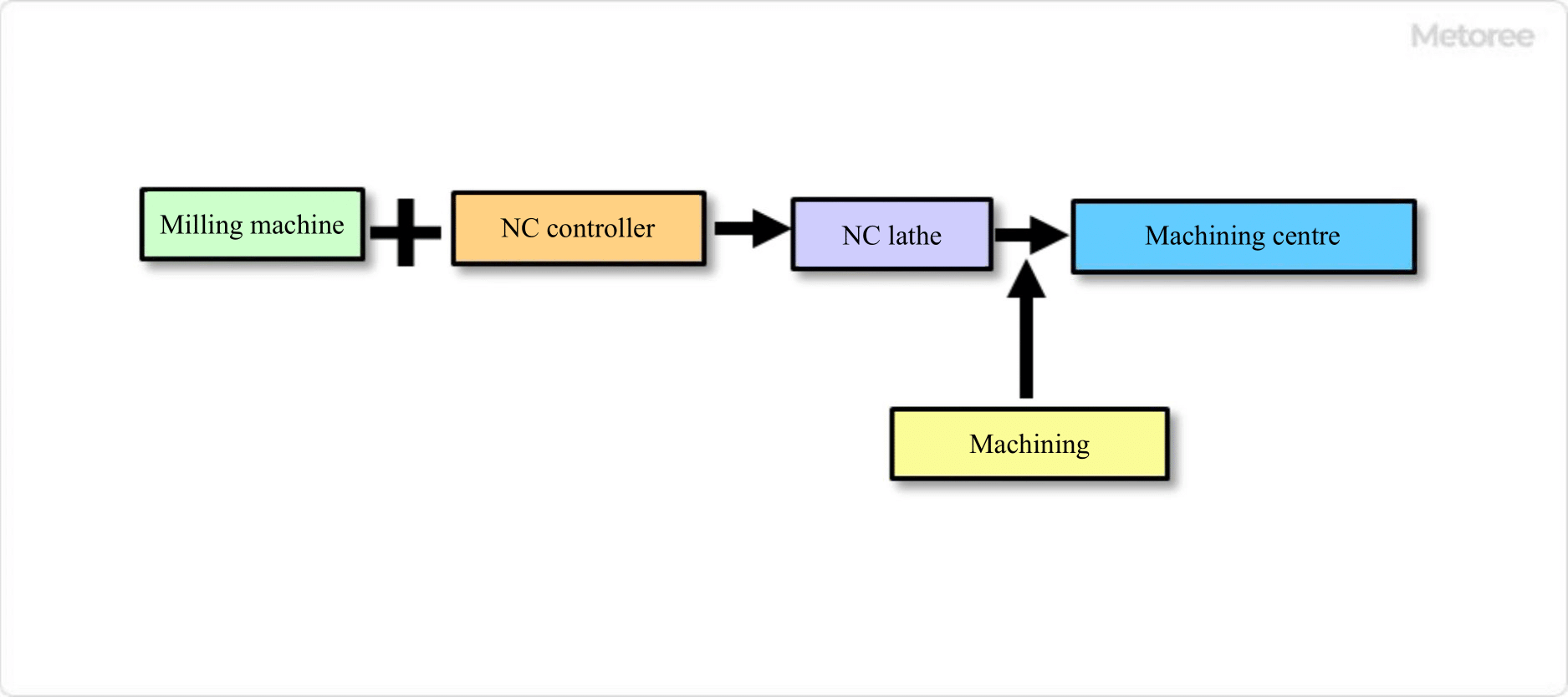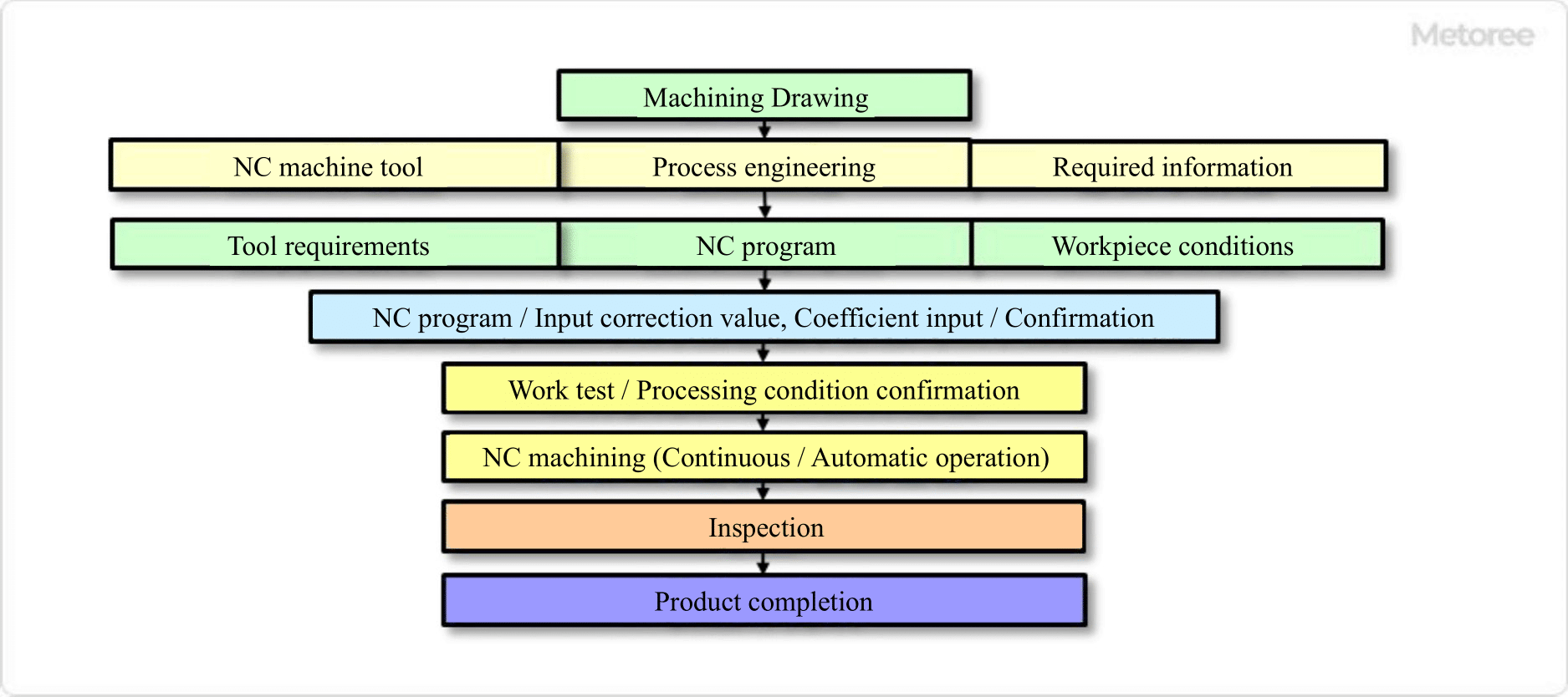What Is NC Machining?
NC Machining is a machining technology based on Numerical Control.
In recent years, in order to reduce costs at manufacturing sites, it has become necessary to improve the machining accuracy and work efficiency of machine tools, and to solve the shortage of labor at manufacturing sites. NC Machining allows for stable machining accuracy and mass production of parts without depending on the intuition and skills of skilled operators.
NC Machining was first introduced by John T. Parsons in the U.S. as an NC milling machine with a built-in servo mechanism. Subsequently, NC Machining technology was greatly developed in Japan, and in 1958, Fujitsu and Makino Milling Machine Mfg. developed the first NC Milling machine produced in Japan. Furthermore, automatic tool changers were developed in the U.S. in 1959, resulting in a significant reduction in machining time.
In the future, more advanced NC Machining technology incorporating artificial intelligence is expected to develop.
Applications of NC Machining

Figure 1. Types, features and uses of NC machining
1. NC Lathe
The NC Machining lathe is mainly of the type in which multiple bites are mounted on a rotating device called a turret, and by rotating the turret, cutting by different bites is possible. This makes it possible to perform another process continuously after one process is completed while the workpiece is fixed in the chuck.
Major applications include external and internal peripheral cutting, threading, grooving, drilling, tapering, and knurling.
2. NC Milling Machine
NC Machining machines are turning machines that do not have an automatic tool changer and perform turning while manually changing tools.
Major applications include plane milling, side milling, step machining, threading, grooving, drilling, and knurling.
3. Turning Center

Figure 2. NC lathes and turning centres
These centers can perform many types of machining, such as machining time reduction and high-precision machining, without setup changes for workpieces that require several types of machining, such as general-purpose lathes and general-purpose milling machines.
Major applications include turning and milling, as well as drilling, reaming, and tapping. The machine is also capable of boring, and has multiple functions as a multitasking machine.
4. Machining Center

Figure 3. NC milling machines and machining centres
Since these machine tools were developed from NC milling machines, most of the machining operations that can be performed on NC Machining machines can also be performed on machining centers. Major applications include boring, milling, drilling, threading, reaming, grooving, and face machining required for industrial equipment. The machine is characterized by its ability to perform a wide variety of complex precision parts machining in sequence.
The above is a description of typical NC Machining applications, but NC Machining technology is also applied to various other machine tools, such as honing machines used in honing, a type of polishing process, electric discharge machines used in electrical discharge machining, and laser cutting machines used in laser machining.
Principle of NC Machining

Figure 4. NC machining process
Every NC Machining machine is composed of an NC device (which sends NC programs to the lathe), an operation panel (where the operator gives various machining instructions to the NC device), and servo motors (which move the machining device according to the NC device’s instructions). This program is called an NC program and is used to control the machine tool.
This program is called an NC Machining program, which is a workpiece machining program based on CAD data.
Other Information on NC Machining
Advantages of NC Machining
High Quality
General-purpose machine tools are operated by operators, which may cause defective products due to operation errors or variations in dimensions and surface conditions due to skill levels, which may result in inconsistent quality. NC Machining, on the other hand, automatically controls machining based on numerical data, resulting in higher machining accuracy, less variation, and more stable quality.
Mass Production and Lower Cost
General-purpose machine tools are operated manually by individual operators, which limits production volume. Furthermore, multiple machining centers can be operated at the same time, leading to higher productivity.
Another advantage is higher work efficiency, which reduces the loss of efficiency due to worker fatigue. Furthermore, it is also effective in terms of passing on skills, as even unskilled workers can perform machining to a certain level of precision.
Safety
Automated machining by NC Machining reduces the possibility of workplace accidents, such as workers being caught in the machine or injured by tools or knives. In addition, the machining operation area is enclosed by a cover or door, which improves worker safety.
2. disadvantages
Expensive Capital Investment
NC machine tools require a general-purpose machine tool, NC controller, peripheral equipment, software, etc., making the capital investment expensive at the time of introduction. Since general-purpose machine tools are more cost-effective for simple machining, it is important to plan for the future when introducing NC machine tools.
NC Program Creation, Quality Assurance, and Information Management
To create NC programs, it is necessary to train and secure engineers who have acquired programming knowledge. It is also important to verify that there are no problems with the program and ensure its quality.
Furthermore, since the program itself is intellectual property and a trade secret, it is essential to ensure information security.
Setup Time Is Necessary
Because setup work is required before machining, such as program loading, the operation time may be longer than that of general-purpose machine tools.